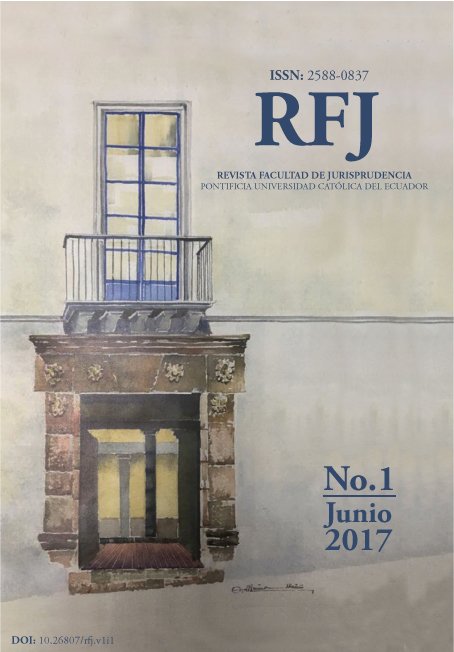La carta magna inglesa: una provocación para pensar las relaciones entre constitución y constitucionalismo
Contenido principal del artículo
Resumen
RESUMEN
A lo largo de este trabajo se busca analizar críticamente el impacto que tuvo la Carta Magna como precedente histórico para el constitucionalismo y la estructura y redacción de constituciones a nivel mundial. En primer lugar, se desarrolla una breve revisión a la historia y el real simbolismo que tiene dicho documento redactado en 1215 en Inglaterra. Posteriormente, se revisan las cláusulas de este manuscrito que permanecen dentro de la cultura jurídica utilizada en el ámbito constitucional y el valor de la interpretación de las diversas naciones de este instrumento para la organización de su normativa constitucional, dentro de las cuales se mencionan al: rule of law, common law, y aquellas de corte romano-germánico-continental, dentro de las cuales, el Ecuador se contempla en la última clasificación. Finalmente, se hace la clave distinción entre el constitucionalismo y la Constitución, la relevancia de la relación entre norma y construcción de principios socio-culturales que sustentan y brindan la eficacia a la llamada norma suprema.
ABSTRACT
This work is based on the critical analysis of the impact the Magna Carta had as a historical precedent for constitutionalism, and the structure and redaction of constitutions worldwide. First of all, there is the development of a brief review of the history and the reality of the symbolism of this document, which was written on 1215 in England. Furthermore, the analysis will be focused on the clauses of this manuscript, which remains inside the juridical culture used in the constitutional ambit, and the value of the interpretation of many nations of this instrument in order to organize the constitutional normative; within which we can mention: the rule of law, the common law and those which had a Romanic-Germanic-continental inherence, of which, Ecuador can be related to the latter classification. Finally, there is an important distinction between constitutionalism and the Constitution itself, the relevance of the relationship between normative and the construction of socio-cultural principles that support and bring efficacy to the supreme norm.
KEYWORDS: Magna Carta, constitutionalism, rights and powerxs, socio-political dimension, principals.
JEL CODE / CLASIFICACIÓN JEL: Y80, A14
Descargas
Detalles del artículo
Citas
María Clara Evangelista, A 800 años de la Carta Magna Inglesa de 1215. Accesible en: http://www.calp.org.ar/wp-content/uploads/2017/02/carta_magna.pdf
Gabriel Santiago Galán Melo, Desmitificación de los Principios de Reserva de Ley y Legalidad Administrativa en la Carta Magna, en Claudia Storini (editora), Carta Magna y Nuevo Constitucionalismo Latinoamericano, Quito, Corporación Editora Nacional, 2017, pp. 235-249.
Miguel Satrústegui Gil-Delgado, La Magna Carta: Realidad y Mito del Constitucionalismo Pactista Medieval, Historia Constitucional, Nro. 10, 2009, pp. 243-262. Accesible en: http://www.historiaconstitucional.com/index.php/historiaconstitucional/article/view/232
Paolo Comanducci, Constitucionalización y Neoconstitucionalismo, en Miguel Carbonell y Leonardo García Jaramillo (editores), El Canon Neoconstitucional, Bogotá, Universidad Externado de Colombia, 2010.
Robert Blackburn, Britainí‚´s Unwritten Constitution, accesible en: https://www.bl.uk/magna-carta/articles/britains-unwritten-constitution
Agustín Grijalva, Nuevo Constitucionalismo, Democracia e Independencia Judicial, Revista Cálamo, Nro. 3 í¢€" Julio 2015, pp. 27-37. Accesible en: http://derecho.udla.edu.ec/calamo/index.php/tabla-de-contenidos-calamo-3
Manuel, García Pelayo, í¢€Å“Constitución y Derecho Constitucionalí¢€, en Escritos políticos y sociales, Madrid, Centro de Estudios Constitucionales, 1989, pp. 23-45.





